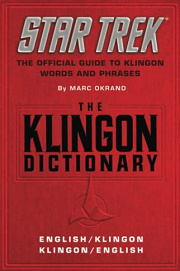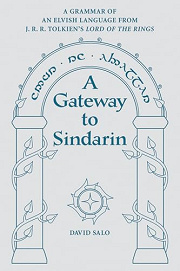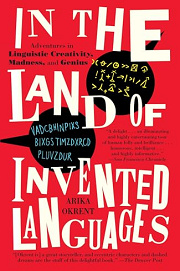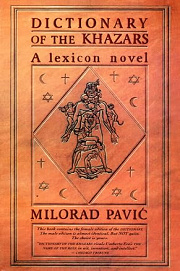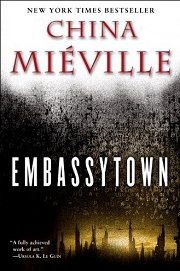Share your thoughts in a quick Shelf Talk!
The Klingon Dictionary by Marc Okrand
Part phrasebook, part cultural passport, this is your bridge into one of sci-fi’s most famous tongues. From greetings to growls, The Klingon Dictionary arms fans and newcomers alike with the vocabulary of honor, battle, and hilariously committed conversation.
Have you read this book? Share what you liked (or didn’t), and we’ll use your answers to recommend your next favorite read!
Love The Klingon Dictionary but not sure what to read next?
These picks are popular with readers who enjoyed this book. Complete a quick Shelf Talk to get recommendations made just for you! Warning: possible spoilers for The Klingon Dictionary below.
In The Klingon Dictionary, did you enjoy ...
... cultural notes and idioms that reveal an alien worldview beyond grammar tables?
Klingon for the Galactic Traveler by Marc Okrand
If digging into TKD’s sociolinguistic nuggets—like when it’s appropriate to say “nuqneH,” how the honorific suffix “-neS” softens commands, or why “-pu’/ -Du’/ -mey” mark different plurals—was your jam, you’ll love how Klingon for the Galactic Traveler turns those details into living culture. It unpacks sayings such as “bortaS bIr jablu’DI’ reH QaQqu’ nay’,” explores bridge protocol, drinking toasts like “Qapla’!,” and shows how rank and ritual shape real usage, not just the tidy tables you memorized.
... meticulous, rule-driven construction of a fictional language, down to phonology and morphology?
A Gateway to Sindarin by David Salo
Loved TKD’s systematized approach—OVS word order, the imperative prefixes (yI-, tI-), and the yes–no question suffix “-’a’,” all neatly slotted into suffix classes 1–9? A Gateway to Sindarin scratches the same itch for rigor. Salo walks you through Sindarin’s phonology, mutation rules, and historical development, parsing attested forms just as carefully as TKD parses Klingon verb morphology—only here it’s Elvish sound shifts and lenition charts instead of {-taH}, {-pu’}, and friends.
... the intellectual puzzle of how constructed languages work and why they’re built?
In the Land of Invented Languages by Arika Okrent
If TKD’s elegant mechanics—like how “-’a’” flips a clause into a question or how “nuqneH” functions pragmatically despite literally meaning “What do you want?”—gave you that heady aha!, In the Land of Invented Languages offers a grand tour of that same cerebral pleasure. Okrent traces Esperanto, Loglan/Lojban, Klingon (including interviews and fandom lore), and more, showing how design choices in morphology and syntax ripple into culture and community the way TKD’s affix classes shape Klingon expression.
... lexicon-as-narrative structure with cross-referenced entries you can read nonlinearly?
Dictionary of the Khazars by Milorad Pavić
Did you enjoy hopping around TKD—bouncing from a headword to related suffixes and usage notes, stitching meaning from entries like “Hegh” and idiomatic constructions? Dictionary of the Khazars turns that reading style into fiction. Presented as interlocking dictionary entries (Red, Green, and Yellow books), it invites you to flip through cross-references the way you navigated TKD’s lexemes, assembling a mythic history from the margins the same way you pieced context from Klingon examples.
... how grammar and semantics shape an alien society and its possibilities for meaning?
Embassytown by China Miéville
If TKD’s precise levers—like aspect “-taH” versus completion “-pu’,” or the way OVS order forces you to reframe who does what—made you think about how language structures thought, Embassytown will thrill you. Miéville’s Ariekei speak a Language that can’t lie and must be voiced in paired mouths; human “Ambassadors” are engineered to produce it. As Avice Benner Cho witnesses, a single semantic innovation destabilizes a civilization—like watching one suffix class in TKD rewrite the rules of reality.
Unlock your personalized book recommendations! Just take a quick Shelf Talk for The Klingon Dictionary by Marc Okrand. It’s only a few questions and takes less than a minute.
